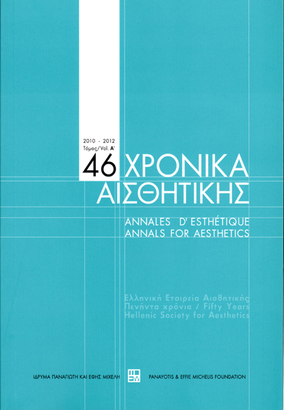Μουσική και μίμηση στον Αριστοτέλη
Part of : Χρονικά αισθητικής : ετήσιον δελτίον της Ελληνικής Εταιρείας Αισθητικής ; Vol.46, No.Β, 2010, pages 243-251
Issue:
Pages:
243-251
Parallel Title:
Music and mimesis in Aristotle
Section Title:
Λογοτεχνία - Μουσική / Literature - Music
Author:
Abstract:
In the beginning of Aristotle’s Poetics we find the following sentence: “epic and tragic poetry, as well as comedy, dithyramb, and most music for aulos and kithara, are all, taken as a whole, kinds of mimesis” (1447a13- 16). This sentence is problematic: which music for aulos and kithara is mimetic and which is not?The interpretation of this passage according to which Aristotle considers as mimetic only the music that accompanies a text is wrong. Aristotle’s reference is clearly focused on purely instrumental music. Thus, programmatic music could also be seen as mimetic, since the audience, by listening to it, can understand what this music represents (e.g. Smetana’s Moldau). Such music to the Greeks was represented by the Pythikos Nomos or the Polykephalos Nomos.However, apart from the programmatic music, other kinds of instrumental music are considered as mimetic by Aristotle. This can be explained by the fact that the harmonies’ (a kind of mode) nature is such, that, by listening to them, the audience gets in the appropriate mood. Aristotle himself provides us with the characteristic elements of some of these harmonies: the mixolydian is mournful (Politics 1340b1 ), the dorian is more sedate and of a specially manly character (Politics 1342b 13).Therefore we conclude that, according to Aristotle, instrumental music is not only mimetic, but its mimesis is more representative than painting itself, since in music we have “representations” of characters, while in painting we have only “signs” (Politics 1340a33-34).
Subject (LC):
Keywords:
Αριστοτέλης, μουσική, ποίηση




